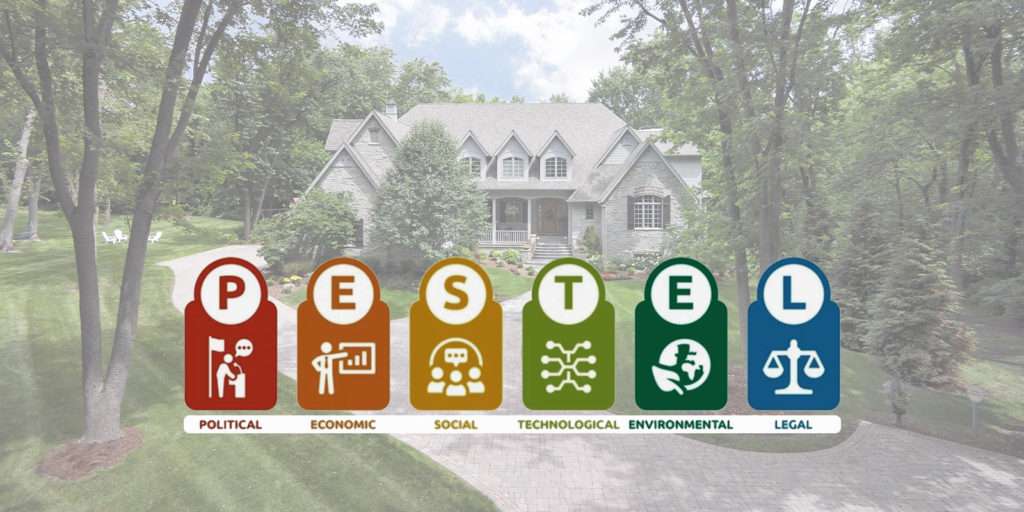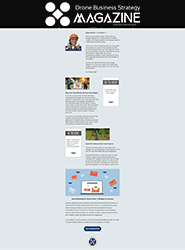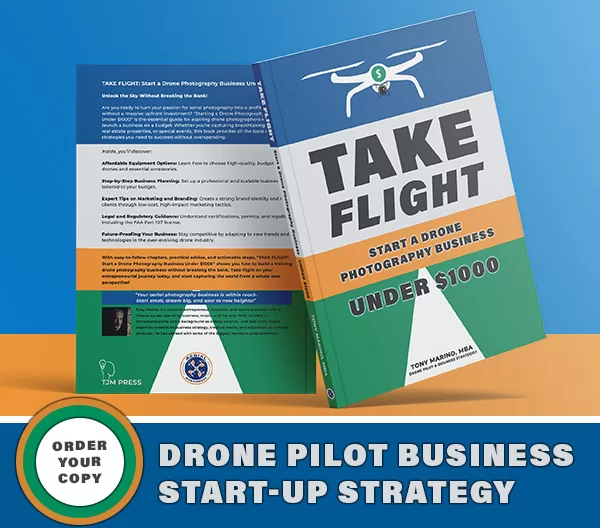
If you’re a commercial drone pilot, you know that the industry is constantly evolving. With new technologies, regulations, and market trends emerging all the time, it’s important to stay ahead of the curve to ensure the long-term success of your drone service business. One way to do this is by conducting a thorough environmental analysis, also known as a PESTEL analysis. This type of analysis can help you identify the various factors that could impact your business, from political and economic factors to social and environmental concerns.
By conducting a PESTEL analysis, you’ll be better equipped to make strategic decisions, mitigate risks, and capitalize on opportunities in the ever-changing world of commercial drone services.
Introduction
Environmental analysis, also known as PESTEL analysis, is a strategic tool used to identify and analyze external factors that could impact a business. The acronym PESTEL stands for Political, Economic, Social, Technological, Environmental, and Legal factors. By conducting a thorough analysis of these factors, businesses can gain a deeper understanding of their operating environment, identify potential risks and opportunities, and develop strategies to navigate changes in the market.
In the context of commercial drone service businesses, conducting a PESTEL analysis is especially important given the rapidly evolving nature of the industry and the various factors that could impact the demand for drone services. By staying attuned to the external factors that could impact their business, drone pilots can make informed decisions, minimize risks, and stay competitive in the long run.
The PESTEL Analysis and the Drone Pilot
PESTEL analysis is a strategic tool that businesses can use to identify and analyze external factors that could impact their operations. The acronym stands for Political, Economic, Social, Technological, Environmental, and Legal factors. In the commercial drone industry, conducting a PESTEL analysis is crucial due to the various external factors that could impact demand for drone services, such as changes in regulations, advancements in technology, and shifts in public perception.
By conducting a thorough analysis of these factors, drone service businesses can gain a deeper understanding of their operating environment, identify potential opportunities and threats, and develop strategies to navigate changes in the market. Additionally, a PESTEL analysis can help drone pilots stay ahead of the competition, capitalize on emerging trends, and mitigate risks associated with external factors.
Overall, a PESTEL analysis is a valuable tool for commercial drone pilots looking to ensure the long-term success of their business in a rapidly changing industry.
(P)ESTEL | Political Factors for Drone Pilots
Political factors refer to the influence of government policies and regulations on businesses. In the context of the commercial drone industry, political factors can have a significant impact on the demand for drone services and the overall operating environment. Some examples of political factors that could impact drone pilots include:
- Regulations and Policies: The regulatory environment surrounding commercial drone use can vary greatly from country to country and even within regions of the same country. Drone pilots must stay up-to-date with the latest regulations and policies in their operating area to avoid legal issues and ensure compliance.
- Security Concerns: Drones can pose security risks if they are used inappropriately. Governments may impose restrictions or regulations to minimize the risk of drones being used for malicious purposes.
- Privacy Laws: Drone pilots must be aware of privacy laws in their operating area, particularly when capturing images or video footage. These laws can vary greatly, and pilots may need to obtain specific permits or permissions to operate their drones in certain areas.
- Trade Restrictions: Trade restrictions and tariffs imposed by governments can impact the cost of drone components and equipment. Drone pilots must stay up-to-date with these factors to ensure they are offering competitive prices.
Overall, political factors can have a significant impact on the commercial drone industry. Drone pilots must stay informed of the latest regulations and policies and comply with them to operate their businesses legally and safely. Additionally, political factors can impact the demand for drone services, and pilots must be prepared to adapt to changes in the operating environment.
P(E)STEL | Economic Factors for the Drone Pilot
Economic factors refer to the influence of economic conditions and trends on businesses. In the commercial drone industry, economic factors can have a significant impact on the demand for drone services and the financial viability of drone service businesses. Some examples of economic factors that could impact drone pilots include:
- Market Demand: The demand for drone services can be influenced by economic conditions such as consumer spending, business investment, and overall economic growth. Drone pilots must monitor market demand and adjust their services accordingly.
- Competition: Economic conditions can also impact the level of competition in the commercial drone industry. In times of economic uncertainty, more individuals may enter the industry, leading to increased competition for drone pilots.
- Cost of Materials: The cost of drone components and equipment can be impacted by economic factors such as inflation, interest rates, and currency exchange rates. Drone pilots must consider these factors when pricing their services and sourcing equipment.
- Funding and Financing: Economic conditions can impact the availability and cost of financing for drone service businesses. Pilots may need to seek alternative sources of funding or adjust their business plans to adapt to changing economic conditions.
Overall, economic factors can have a significant impact on the commercial drone industry. Drone pilots must stay attuned to economic trends and adjust their business strategies accordingly to remain competitive and financially viable. Additionally, economic factors can impact the demand for drone services, and pilots must be prepared to adapt to changes in market demand.
PE(S)TEL | Social Factors for Drone Pilots
Social factors refer to the influence of cultural and social trends on businesses. In the commercial drone industry, social factors can impact the demand for drone services and the public perception of drones. Some examples of social factors that could impact drone pilots include:
- Perception and Acceptance: The public’s perception of drones can impact the demand for drone services. Negative news stories or incidents involving drones can lead to a decline in public acceptance and demand for drone services.
- Demographics: The demographic makeup of the population can impact the demand for drone services. For example, younger generations may be more likely to embrace drone technology and be interested in drone services.
- Trends and Fads: Social trends and fads can impact the demand for drone services. For example, the popularity of aerial photography and videography has led to increased demand for drone services in those areas.
- Education and Awareness: Education and awareness campaigns can impact the public’s perception of drones and increase demand for drone services. By educating the public on the benefits of drone technology and responsible drone use, drone pilots can help increase demand for their services.
Overall, social factors can impact the demand for drone services and the public perception of drones. Drone pilots must stay attuned to social trends and adjust their business strategies accordingly to remain competitive and relevant in the industry. Additionally, education and awareness campaigns can help increase public acceptance and demand for drone services.
PES(T)EL | Technological Factors for Drone Pilots
Technological factors refer to the influence of technological advancements on businesses. In the commercial drone industry, technological factors can have a significant impact on the development of drone technology and the demand for drone services. Some examples of technological factors that could impact drone pilots include:
- Advancements in Drone Technology: Technological advancements in drone technology can impact the capabilities and efficiency of drone services. Drone pilots must stay up-to-date with the latest advancements in drone technology to remain competitive in the industry.
- Automation and Artificial Intelligence: Automation and artificial intelligence (AI) can improve the efficiency and accuracy of drone services. Drone pilots must consider the use of automation and AI to optimize their services and remain competitive.
- Integration with Other Technologies: Drones can be integrated with other technologies such as sensors, data analytics, and GPS. This integration can expand the capabilities of drone services and improve the overall customer experience.
- Data Security: As drones collect and transmit data, data security is a critical technological factor. Drone pilots must ensure that they have adequate measures in place to protect sensitive data and comply with data privacy regulations.
Overall, technological factors can have a significant impact on the commercial drone industry. Drone pilots must stay attuned to technological advancements and consider how they can leverage them to improve their services and remain competitive. Additionally, data security is a critical consideration for drone pilots as they operate in an increasingly connected and data-driven environment.
PEST(E)L | Environmental Factors for Drone Pilots
Environmental factors refer to the influence of environmental conditions and trends on businesses. In the commercial drone industry, environmental factors can impact the operation and sustainability of drone services. Some examples of environmental factors that could impact drone pilots include:
- Weather Conditions: Weather conditions such as wind, rain, and temperature can impact the operation of drones. Drone pilots must consider weather conditions when planning and executing drone services.
- Environmental Regulations: Environmental regulations such as noise pollution, air quality, and wildlife protection can impact the operation of drones. Drone pilots must comply with these regulations and consider their impact on the environment when planning their services.
- Sustainability: The sustainability of drone services is a critical environmental factor. Drone pilots must consider the environmental impact of their operations and take steps to reduce their carbon footprint and environmental impact.
- Natural Disasters: Natural disasters such as hurricanes, earthquakes, and wildfires can impact the demand for drone services and the operation of drones. Drone pilots can play a critical role in disaster response and recovery efforts.
Overall, environmental factors can impact the operation and sustainability of drone services. Drone pilots must stay attuned to environmental trends and regulations and consider the environmental impact of their operations. Additionally, drone services can play a critical role in disaster response and recovery efforts, making them an essential component of environmental sustainability.
PESTE(L) | Legal Factors for Drone Pilots
Legal factors refer to the influence of laws, regulations, and policies on businesses. In the commercial drone industry, legal factors can impact the operation and growth of drone services. Some examples of legal factors that could impact drone pilots include:
- Drone Regulations: Regulations on drone operation vary by country and region, and drone pilots must comply with these regulations. These regulations can include registration requirements, restrictions on flight locations, and limitations on flight altitude.
- Liability and Insurance: Liability and insurance requirements for drone operation can impact the cost and feasibility of drone services. Drone pilots must have adequate insurance coverage to protect against potential liability.
- Intellectual Property: Intellectual property laws protect the rights of individuals and companies to their creations, and drone services can involve the creation of intellectual property. Drone pilots must consider the intellectual property rights of their clients and protect their own intellectual property.
- Privacy and Data Protection: As drones collect and transmit data, privacy and data protection regulations are critical legal factors. Drone pilots must comply with data protection and privacy regulations and ensure that they are not violating the privacy rights of individuals.
Overall, legal factors can impact the operation and growth of drone services. Drone pilots must stay attuned to the legal requirements of drone operation and comply with regulations to avoid liability and legal consequences. Additionally, intellectual property and privacy considerations are critical legal factors for drone pilots to consider to protect their own rights and the rights of their clients.
Five Forces Competitive Analysis for Drone Pilots
The Five Forces analysis is a framework used to assess the competitive environment of an industry. It was developed by Michael Porter, a Harvard Business School professor. As a drone pilot offering services, the Five Forces analysis can provide valuable insights into the competitive environment of your industry. By analyzing the five forces, you can identify the key factors that are affecting the profitability of your drone services and develop strategies to address them.
Here’s how the Five Forces analysis can help:
- Competitive rivalry: By assessing the level of competition in your market, you can identify your competitors’ strengths and weaknesses, and develop strategies to differentiate your services from theirs. For example, you could offer additional services, such as aerial photography or videography, to stand out from competitors who offer only basic drone services.
- Threat of new entrants: By understanding the barriers to entry in the drone services market, such as the cost of equipment and regulatory requirements, you can assess the likelihood of new competitors entering the market. This can help you develop strategies to protect your market share, such as building a strong reputation through customer satisfaction and building relationships with regulatory bodies.
- Threat of substitutes: By analyzing the availability of substitute services, such as traditional photography or videography, you can identify opportunities to differentiate your drone services from traditional services. For example, you could highlight the unique perspectives and angles that only a drone can provide.
- Bargaining power of suppliers: By assessing the bargaining power of your suppliers, such as drone manufacturers and distributors, you can develop strategies to negotiate better prices and terms. This can help you lower your costs and increase your profitability.
- Bargaining power of buyers: By analyzing the bargaining power of your customers, such as their ability to negotiate prices and terms, you can develop strategies to attract and retain customers. For example, you could offer discounts for repeat customers or offer bundled services at a reduced price.
In summary, the Five Forces analysis can help you identify opportunities and threats in your market, develop strategies to differentiate your services, and improve your profitability. By using this framework to analyze your industry, you can stay ahead of the competition and build a successful drone services business.
The Takeaway
Conducting an environmental analysis, specifically a PESTEL analysis, is critical for the success and sustainability of commercial drone services. Environmental factors such as political, economic, social, technological, environmental, and legal factors can significantly impact the operation and growth of drone services.
Drone pilots must stay informed about trends and changes in the industry and conduct regular environmental analyses to adapt to changing conditions. Understanding the external factors that influence their business can help drone pilots identify opportunities, mitigate risks, and make informed decisions that enhance the success of their drone service business.
Ultimately, the successful operation of a drone service business requires a holistic approach that considers the various factors that influence the industry. By conducting an environmental analysis, drone pilots can gain a deeper understanding of the external factors affecting their business and position themselves for long-term success.
Be smart, safe, and forever fly!
If you have any questions, let us know! If you’d like to hire us, you can get more information here.
Written by: Tony Marino, MBA – FAA Certified Part 107 Commercial Drone Pilot and Chief Business Strategist at Aerial Northwest
Frequently Asked Questions
References
Jeffs, C. (2008). External analysis: Analysis of the macro (FAR) environment. SAGE Publications Ltd, https://doi.org/10.4135/9781446216446
Porter, M. E. Competitive Strategy: Techniques for Analyzing Industries and Competitors. New York: Free Press, 1980. (Republished with a new introduction, 1998.)
Disclaimer: The information provided in this blog post is for general informational purposes only and should not be construed as legal advice.
Starting Your Own Drone Service Business
Pick up your copy today on Amazon and wherever fine books are sold.

DRONE BUSINESS STRATEGY MAGAZINE
A free digital publication made exclusively for all small business drone pilots to them help start-up, become profitable while sustaining a competitive advantage within the drone service industry sector they opt to serve.
“If you love to fly, we’d love to have you come aboard!”
We share your information with no one. Our Privacy Policy.











Leave a Reply
Your email is always safe with us.